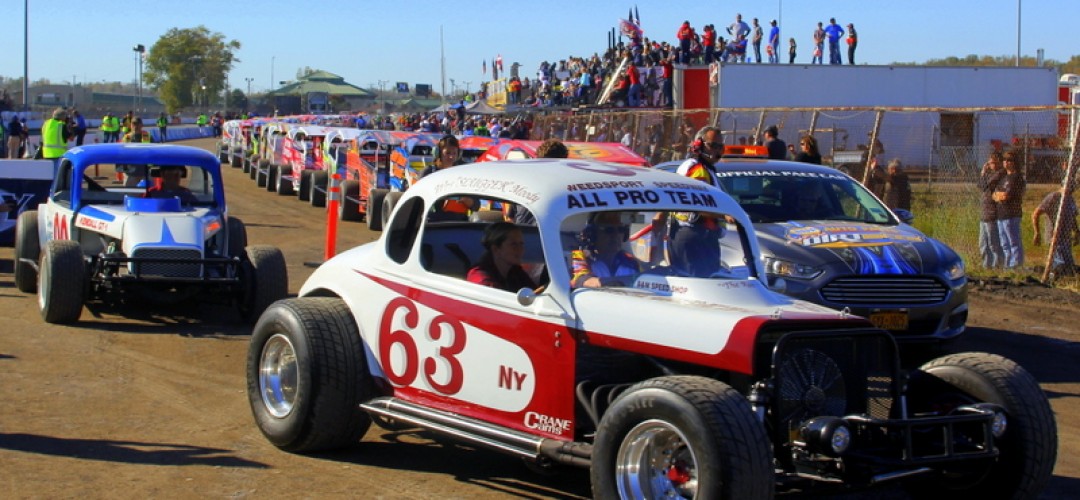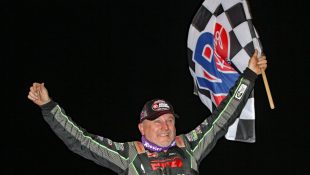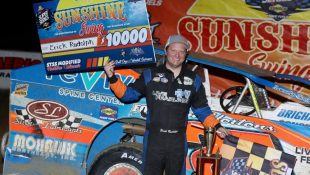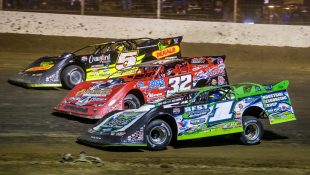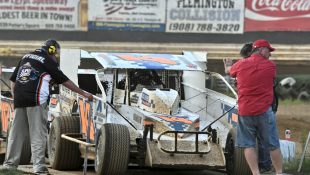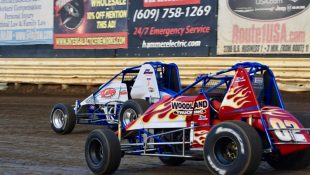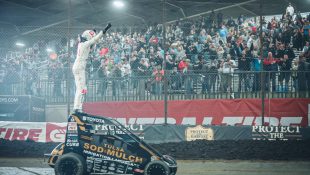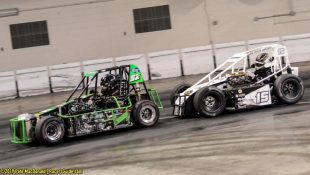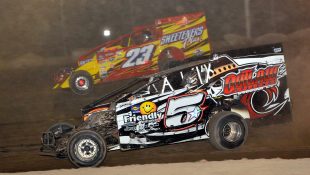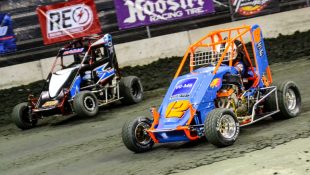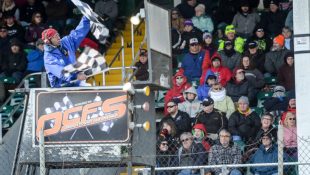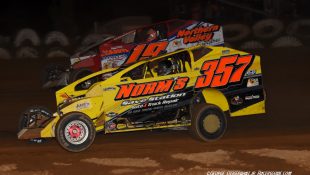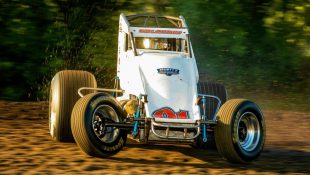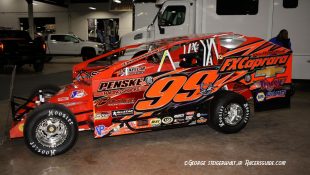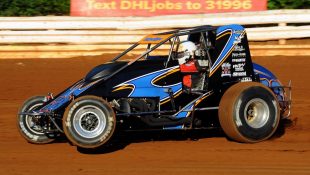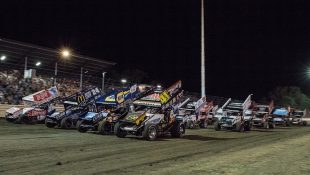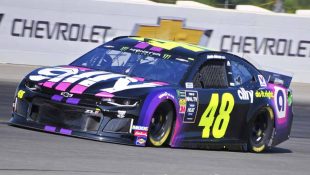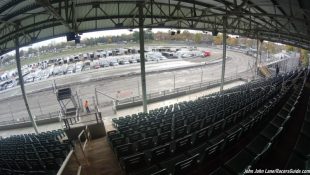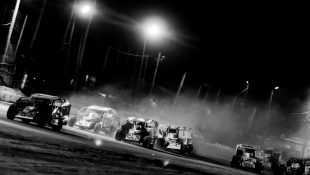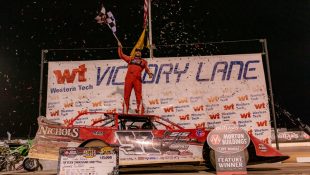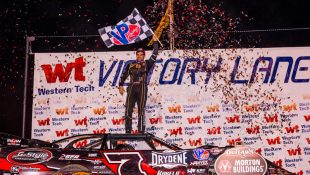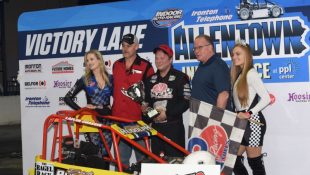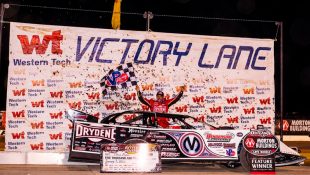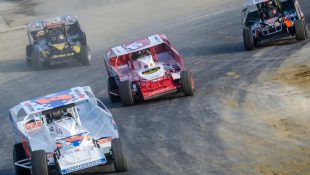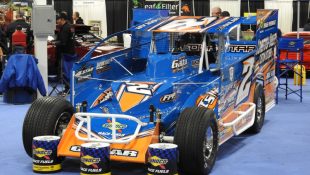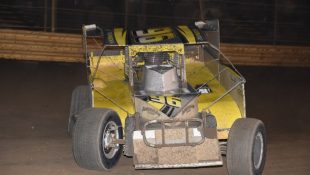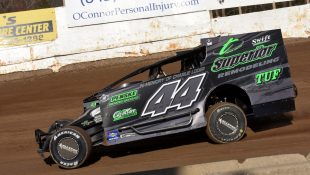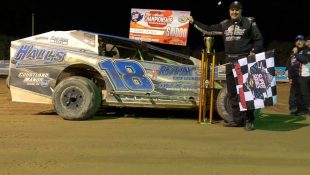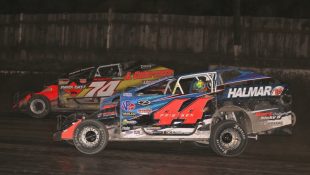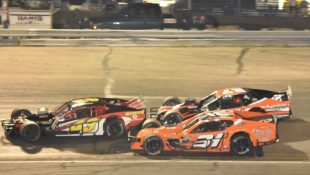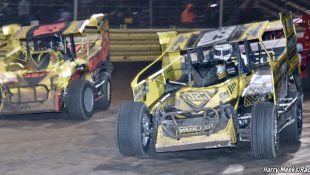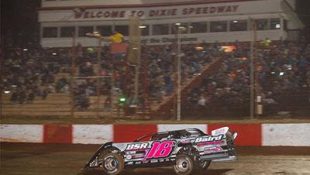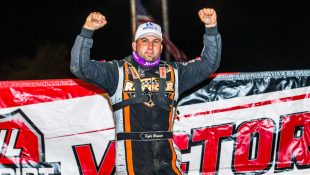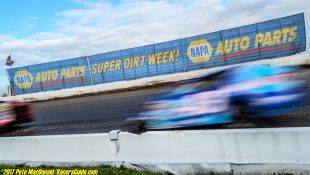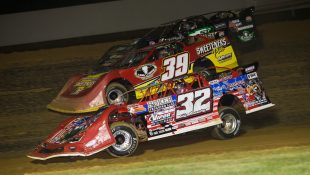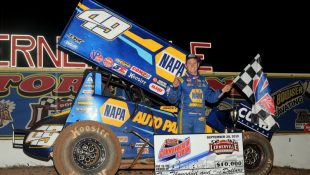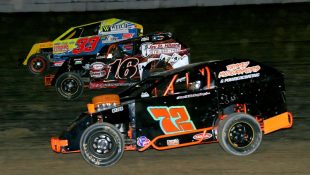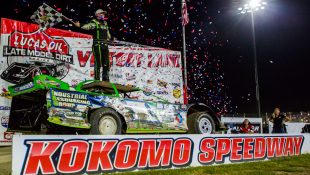There Was More to Syracuse than Just a Speedway
Story By: MATT NOLES / RACERSGUIDE.COM Photos By: DAVE DALESANDRO / RACERSGUIDE.COM
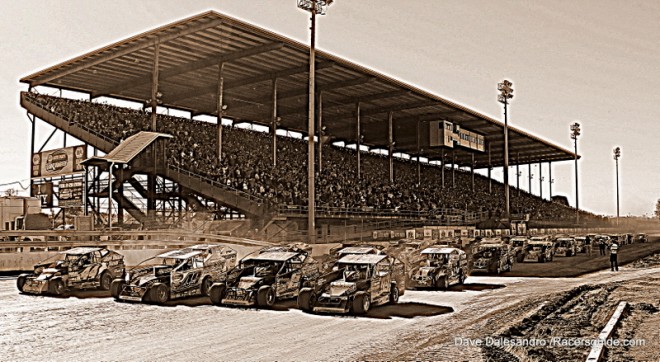 SPRAKERS, NY- February 24, 2016- It was just another Monday morning; one typical for October in New York State. The sun was shining and a seasonal chill carried on the air amongst the crystal clear background of a cloudless autumn sky.
SPRAKERS, NY- February 24, 2016- It was just another Monday morning; one typical for October in New York State. The sun was shining and a seasonal chill carried on the air amongst the crystal clear background of a cloudless autumn sky.
As jovial as the change in the season might have been, a self-induced dampness seemed to hang in the air at exit 29 of the New York State Thruway. In all reality, the line of dust adorned cars and campers that spilled from the tollbooth resembled more of a funeral procession than the typical flow of weary travelers eager to make their way home. The famed mile in Syracuse was officially a memory; a mere gravesite of what once was. It was a terrifying finality and one that isn’t likely to sink in for some time.
Yet the question that begs to be asked is simply this; what was Syracuse? One might argue that it was merely a place; a location of gathering that was built up of nothing more than clay and concrete, guardrails and grandstands. However, the simple truth is that there was much more to Syracuse than just the physical attributes that made it a racetrack. After all, the aforementioned objects are only what a racetrack like Syracuse requires; it’s not what Syracuse actually was.
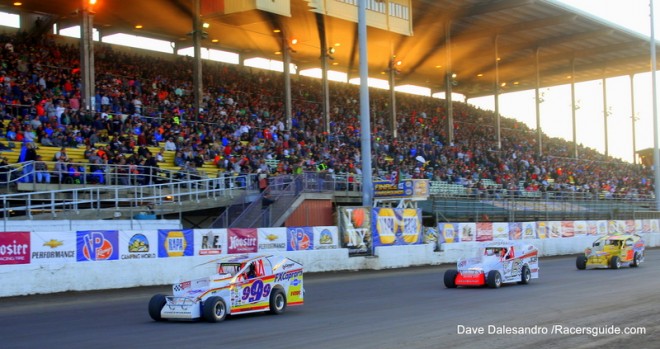 There are times in sport where one word has the power to bring notoriety and understanding to a particular venue. Just the mention of the word Daytona enacts a flood of memories so thick that one can nearly picture the daredevils in the infancy of NASCAR first storming the beach and then the indelible high banks of the superspeedway for 500 miles in hopes of glory.
There are times in sport where one word has the power to bring notoriety and understanding to a particular venue. Just the mention of the word Daytona enacts a flood of memories so thick that one can nearly picture the daredevils in the infancy of NASCAR first storming the beach and then the indelible high banks of the superspeedway for 500 miles in hopes of glory.
A place like Indianapolis automatically brings attention to one seemingly minuscule yard of bricks that every May have the decisive power to bring men and women to their knees in both joy and anguish, and a resolute and unyielding desire to put a simple jar of milk to their lips in celebration. Without the famed ‘Brickyard,’ the month of May would be just another month marking our time around the sun.
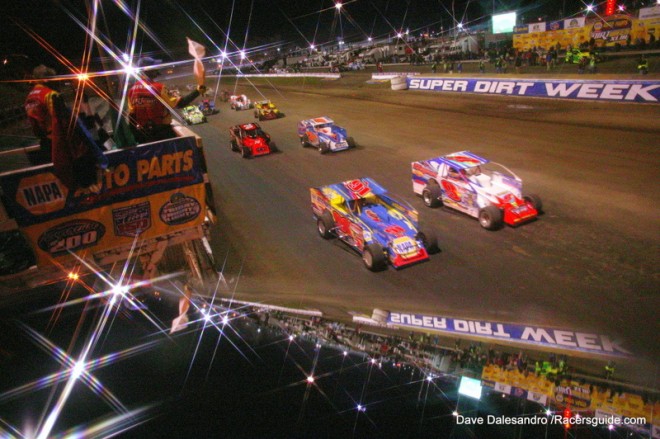 For the dirt modifieds of the northeast, there was Syracuse. The one place we had to showcase our stars on the national stage with both pride and ferocious loyalty. It wasn’t just a speedway like many misguided politicians assume; it was a place so entrenched with history and tradition that the likes of will never be seen again. After all, regardless of whether you won at the mile or lost it all, come every October the roads inexplicably led to the New York State Fairgrounds.
For the dirt modifieds of the northeast, there was Syracuse. The one place we had to showcase our stars on the national stage with both pride and ferocious loyalty. It wasn’t just a speedway like many misguided politicians assume; it was a place so entrenched with history and tradition that the likes of will never be seen again. After all, regardless of whether you won at the mile or lost it all, come every October the roads inexplicably led to the New York State Fairgrounds.
Surprisingly enough, though built as a horse track in 1826, it was politics that brought the barn-storming spectacle of auto racing to the facility in 1903 at the urging of then lieutenant governor Anthony Woodruff. It was a spectacle that would continue for the next 112 years until Governor Cuomo, to the befuddlement of all diehard race fans, made one of the more misguided decisions of his tenure in office. We buried the famed grandstand in January.
But still, what was it about this one week in October that caused both drivers and fans alike to gleam in anticipation? What was it that called to us in frightening regularity once the calendar reached the tenth month of the year?
To understand dirt modified racing was to understand Syracuse. After a grueling season of weekly competition, drivers would set their sights on the very pinnacle of modified racing; the 200 at Super Dirt Week. You either loved to race their or you hated it; there was no middle ground. There was no compromise. Like so many occurrences throughout racing it was simply all or nothing.
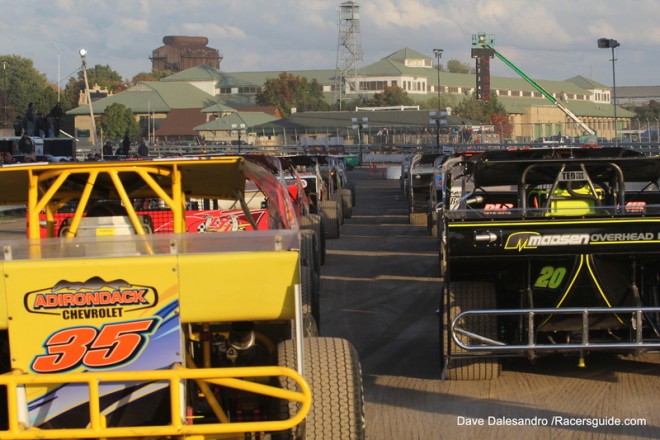 There are venues that drivers enjoyed visiting more than the immortal 5,280 feet in central New York. There are other races that drivers want to conquer before their time behind the visor is complete. However, there will never be another race that encompasses all the raw, human emotions one feels after crossing the finish line ahead of all others. Winning at Wes Moody’s Mile was relief, elation and thankfulness all at once. There will never be another event that comes close. Never.
There are venues that drivers enjoyed visiting more than the immortal 5,280 feet in central New York. There are other races that drivers want to conquer before their time behind the visor is complete. However, there will never be another race that encompasses all the raw, human emotions one feels after crossing the finish line ahead of all others. Winning at Wes Moody’s Mile was relief, elation and thankfulness all at once. There will never be another event that comes close. Never.
The very first time I set foot upon those hallowed grounds in October, I realized what the allure was. Sure, the costs of fielding a car far outweighed the return when it came to the economics of running at the mile, but that wasn’t what drivers were there for. Some people will remember who won at Weedsport one year, others may remember who won at Rolling Wheels but everyone remembers who won at Syracuse.
As soon as you came through the turn three tunnel on a crisp fall morning, you realized why you were there. In the eerie silence before the tenants began to emerge from their campers, before a voice boomed from the heavens like Robin Williams greeting you with a ‘good morning Syracuse,’ the universe unveiled to you a crystal clear understanding of what this piece of earth truly meant. The grandstand stood before you in all of its frost-covered glory and if you listened carefully, you could hear the sounds of seasons past rattle through your mind like a freight train.
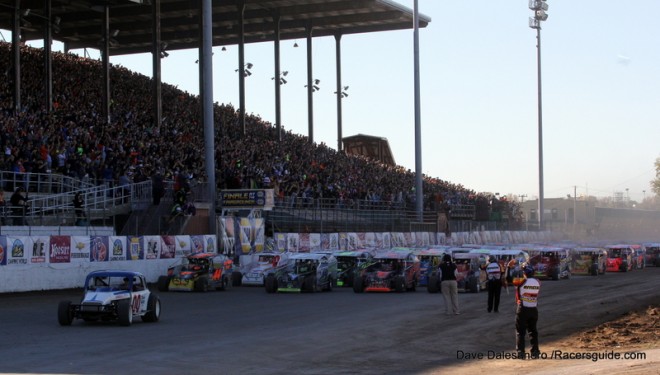 You heard the elation of Buzzie Reutimann’s first triumph in 1972 during the first running of Super Dirt Week and his impressive run the following year. You feel the roar of the crowd when Jack Johnson became the first New Yorker to claim victory in the fall classic in 1979. Walking along through the pit area, faint whispers of Gary Balough’s dominating and rule changing performance behind the wheel of the famed ‘Batmobile’ in 1980 leaves you speechless. Brett Hearn’s 1985 victory makes you realize that when it came to Syracuse, age really was just a number.
You heard the elation of Buzzie Reutimann’s first triumph in 1972 during the first running of Super Dirt Week and his impressive run the following year. You feel the roar of the crowd when Jack Johnson became the first New Yorker to claim victory in the fall classic in 1979. Walking along through the pit area, faint whispers of Gary Balough’s dominating and rule changing performance behind the wheel of the famed ‘Batmobile’ in 1980 leaves you speechless. Brett Hearn’s 1985 victory makes you realize that when it came to Syracuse, age really was just a number.
You wander past the finish line where Kenny Tremont finally found relief in 1999 after wondering if he would ever add a Syracuse trophy to his list of hall of fame accomplishments. You picture the sight of Billy Dunn’s agonizing defeat in the small-block feature on Saturday only to return a mere 24 hours later and land in victory lane after the 200 on Sunday in 2013. You recall the tenacity of Stewart Friesen as he swept past Matt Sheppard on the outside of turn three, a move that will go down in lore, back in 2014. The memories, the feelings garnered are endless.
You also come to a sobering realization as you look around in a 360 degree panorama. This place, this house that modifieds built wasn’t just a shrine for the living; it was also a standing memorial to the deceased. Drivers who came and never left, loved ones who requested to have their ashes spread here; if ever there was a church devoted to the racing faithful, this was it.
This place, as some misguided politicians might call it, was more than a dirt track; more than another plot of ground where the pursuit of grip was the plan of the day. This is where dreams were realized and hopes were dashed. This is where legends were created, and some careers were ended. This is where our sport was permanently altered; molded almost and now, we are stuck standing and beating on hopelessly and ceaselessly against the current with no resolution or answers, only questions. If this is progress, you can count me out.
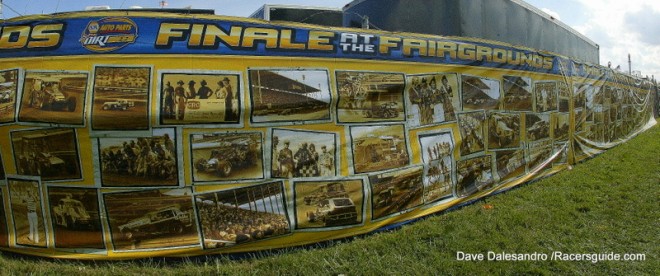
And so it goes. For 112 years the gathering of speed and the pursuit of greatness descended upon Syracuse. After 44 of those years, the annual pilgrimage is no more. From Buzzie Reutimann to Stewart Friesen and every winner in between, the history has now been written, the final story has been inscribed and the book has been closed. Another great chapter no longer awaits the reader and the memories, like the dust upon which we derived our very happiness, will fade away on the western wind.
 This was not just any other race; this was the race. This was not just any other speedway; this was Wes Moody’s mile. This was not just any other week; this was Super Dirt Week. This was the chase for greatness; this was the chance at achieving immortality. THIS. WAS. SYRACUSE.
This was not just any other race; this was the race. This was not just any other speedway; this was Wes Moody’s mile. This was not just any other week; this was Super Dirt Week. This was the chase for greatness; this was the chance at achieving immortality. THIS. WAS. SYRACUSE.

